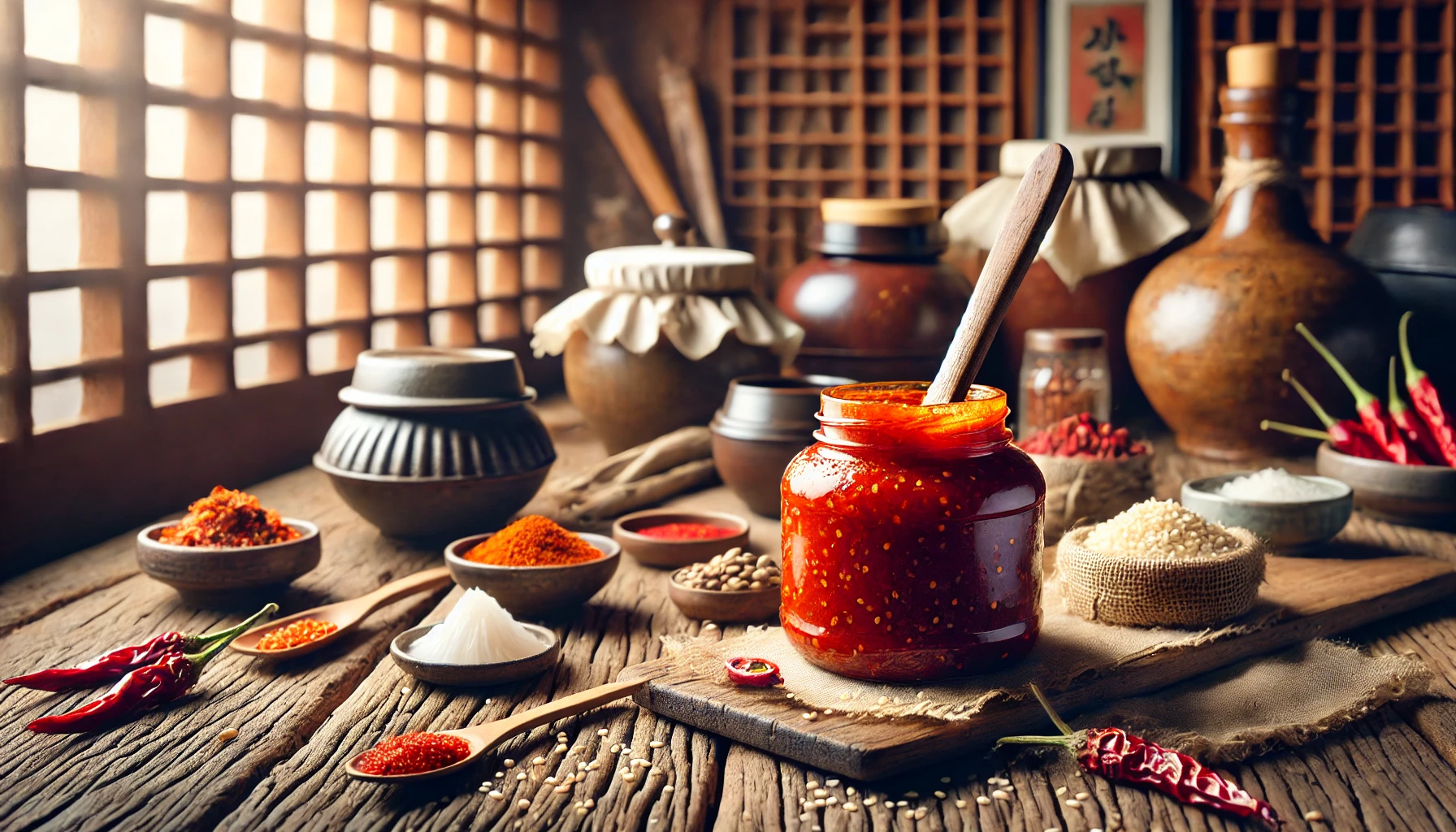Gochujang (고추장) is a vital element of Korean cuisine, renowned for its unique blend of heat, sweetness, and rich umami flavors. With roots tracing back to the 16th century, this fermented chili paste evolved from the introduction of chili peppers in Korea and has played an essential role in shaping Korean culinary practices.
A Historical Treasure
The journey of Gochujang began when chili peppers were introduced to Korea. By the Joseon Dynasty, it became a staple in homes, where families crafted their unique recipes and fermented the mixture in large Onggi pots, allowing for complex flavor development over months.
Core Ingredients
This chili paste is made from:
- Chili powder for heat
- Fermented soybeans for umami
- Glutinous rice for sweetness
- Salt for flavor
- Barley malt or wheat for texture
Cultural Significance
Gochujang is not just a condiment; it embodies Korean identity and familial traditions, often passed down through generations.
A Modern Culinary Star
Today, Gochujang has transcended Korean kitchens, finding its way into global dishes like BBQ sauces and tacos, celebrated for its versatility.
With Gochujang, we get more than just heat—we taste a legacy.
As Gochujang continues to gain popularity, its story remains a captivating blend of tradition and modernity. To discover more about this iconic ingredient, delve into the full article.
Read the full story for more details:
Continue reading

